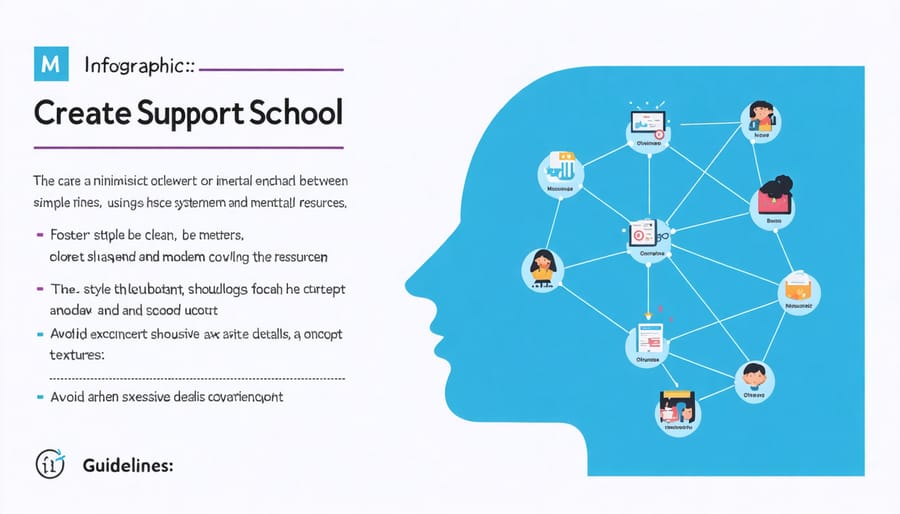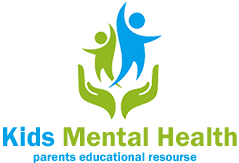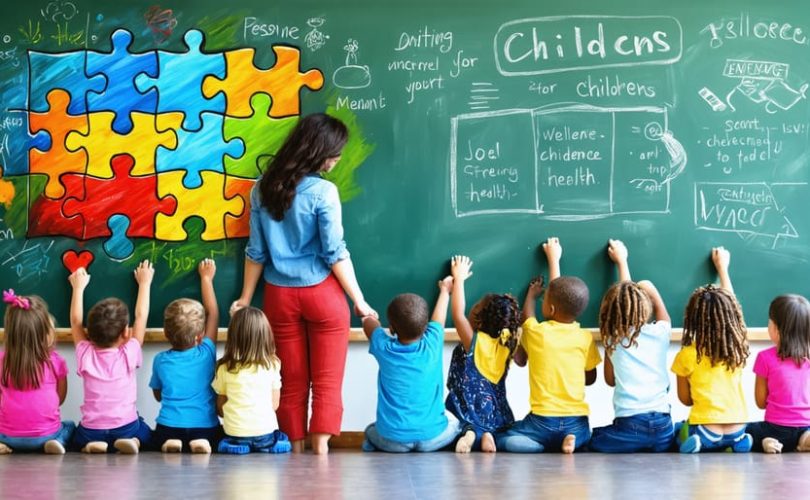Every child in foster care carries a unique story of resilience, but their mental health needs often go unrecognized and untreated. Studies show that up to 80% of children in the foster care system experience significant mental health challenges, yet only a fraction receive the support they desperately need. Behind these statistics are real children struggling with trauma, attachment issues, and the fundamental need for stability and emotional security.
The intersection of foster care and mental health presents a complex challenge that demands our immediate attention and action. These young individuals navigate not only the typical developmental hurdles of childhood and adolescence but also the added layers of separation, loss, and adaptation to new environments. Their experiences can lead to anxiety, depression, and post-traumatic stress disorder, impacting their ability to form relationships, succeed academically, and develop a healthy sense of self.
As educators, mental health professionals, and caregivers, we have both an opportunity and responsibility to create supportive environments that acknowledge and address these challenges. Through understanding, early intervention, and collaborative care approaches, we can help foster children build the emotional resilience they need to thrive. This isn’t just about managing symptoms – it’s about empowering these young people to write their own stories of healing and growth, supported by a community that understands and responds to their unique mental health needs.
Understanding the Mental Health Landscape of Foster Children
Common Mental Health Challenges
Foster children often face unique mental health challenges due to their experiences of separation, loss, and instability. Common issues include anxiety disorders, which can manifest as constant worry about future placement changes or difficulty forming attachments. Depression is also prevalent, sometimes emerging from feelings of abandonment or grief over separated families.
Many foster youth experience trauma responses in children, which may appear as heightened startle responses, emotional dysregulation, or difficulties with trust and relationships. Attention problems and behavioral challenges are frequently reported, often stemming from the need to adapt to multiple environments and caregivers.
These challenges can be complex and interconnected, with one issue often influencing another. For instance, anxiety might lead to sleep disturbances, which in turn affects school performance and social relationships. It’s important to recognize that these responses are normal reactions to abnormal circumstances, and with proper support and understanding, many foster children can develop healthy coping mechanisms and emotional resilience.
Early identification and intervention are crucial in addressing these mental health challenges, ensuring foster children receive the comprehensive care they need to thrive.
The Impact on Learning
Mental health challenges significantly impact foster children’s ability to learn and thrive in educational environments. Many students struggle with anxiety in educational settings, difficulty concentrating, and emotional regulation issues that can disrupt their academic progress.
Studies show that foster children experiencing mental health challenges often have lower grades, increased absences, and higher dropout rates compared to their peers. These struggles aren’t just academic – they extend to social relationships and classroom participation. A foster child dealing with trauma or attachment issues might find it challenging to form friendships, work in groups, or engage in class discussions.
Teachers often report that emotional outbursts, withdrawal, or behavioral challenges can interrupt learning not only for the affected student but sometimes for the entire class. However, with appropriate support and understanding, these challenges can be addressed effectively. When educators and mental health professionals work together to create supportive learning environments, foster children show remarkable resilience and improvement in both their academic performance and social integration.
Success stories from schools implementing trauma-informed teaching approaches demonstrate that with the right support, foster children can overcome these obstacles and achieve their full academic potential.

Creating a Supportive School Environment
Training Staff and Teachers
Training staff and teachers to recognize and respond to mental health challenges in foster children is crucial for creating a supportive educational environment. Educators spend significant time with these students and are uniquely positioned to identify early warning signs of emotional distress.
Mental health literacy training should cover several key areas. First, teachers need to understand common mental health challenges faced by foster children, including anxiety, depression, and trauma responses. This knowledge helps them recognize when a student might need additional support.
“Understanding trauma-informed practices transformed how I approach my students,” shares Maria Rodriguez, a middle school teacher with 15 years of experience working with foster youth. “It helped me see behavioral issues through a different lens.”
Training should also include practical strategies for creating safe, nurturing classroom environments. This might involve learning de-escalation techniques, implementing predictable routines, and developing trauma-sensitive approaches to discipline.
Regular workshops and professional development sessions can help staff stay current with best practices. These sessions should include:
– Recognition of mental health warning signs
– Communication strategies for working with foster families
– Crisis intervention techniques
– Cultural competency training
– Understanding the foster care system
Collaboration between school counselors, teachers, and foster care specialists is essential. When educators feel confident in their ability to support students’ mental health needs, they can better contribute to creating a healing-centered educational experience for foster children.

Establishing Support Systems
Establishing strong support systems is crucial for foster children’s mental well-being. These children benefit greatly from consistent access to school mental health support programs and specialized counseling services that understand their unique experiences.
Individual therapy provides a safe space for foster children to process their emotions and experiences. Many successful programs pair children with therapists who specialize in trauma-informed care and maintain long-term relationships with their young clients, even when placements change. As Sarah Martinez, a child psychologist with 15 years of experience working with foster youth, explains, “Consistency in therapeutic relationships can be an anchor for children who have experienced multiple transitions.”
Peer support groups are equally valuable, allowing foster children to connect with others who share similar experiences. These groups help reduce feelings of isolation and create lasting friendships. Some schools have implemented buddy systems where experienced foster children mentor newcomers, creating a supportive community within the educational environment.
Regular check-ins with school counselors, combined with coordination between mental health professionals, foster parents, and teachers, ensure comprehensive support. This collaborative approach helps identify early warning signs of emotional distress and enables quick intervention when needed. The goal is to create a network of caring adults who can provide consistent emotional support and guidance throughout the child’s journey in foster care.
Developing Trauma-Informed Practices
Creating trauma-sensitive environments is essential for supporting foster children’s emotional well-being and academic success. As Sarah Martinez, a child trauma specialist, explains, “When we understand that challenging behaviors often stem from past experiences, we can respond with compassion rather than punishment.”
Implementing trauma-informed practices begins with staff training. Teachers and administrators should learn to recognize signs of trauma and understand how it affects learning and behavior. This knowledge helps create a more supportive and understanding school environment.
Key elements of trauma-sensitive classrooms include:
– Predictable routines that help students feel safe and in control
– Quiet spaces where children can regulate their emotions
– Clear communication about changes or transitions
– Relationship-building activities that foster trust
– Flexible seating arrangements that accommodate different comfort levels
Schools should also develop policies that consider trauma’s impact. For example, traditional disciplinary approaches may need modification to account for trauma responses. Instead of immediate consequences, a collaborative problem-solving approach often proves more effective.
“When we implemented trauma-informed practices in our school,” shares Principal James Chen, “we saw a 40% reduction in behavioral incidents and significantly improved academic engagement among our foster students.”
Remember that developing trauma-sensitive practices is an ongoing process that requires patience, consistency, and regular evaluation. The goal is to create an environment where all students, especially those in foster care, feel safe, supported, and capable of learning.

Collaboration Between Schools and Foster Care System
Communication Protocols
Effective communication is the cornerstone of supporting foster children’s mental health needs. When schools, foster parents, and case workers maintain clear, consistent channels of communication, they create a safety net that catches potential issues before they escalate.
A successful communication protocol typically involves regular check-ins through multiple channels. Weekly email updates between teachers and foster parents help track academic progress and behavioral changes. Monthly virtual or in-person meetings that include case workers ensure everyone stays informed about the child’s overall wellbeing and any therapeutic interventions.
Many schools have found success with designated liaison officers who coordinate between all parties. These professionals can serve as a single point of contact, simplifying information flow and reducing the risk of miscommunication. They often maintain secure digital platforms where all stakeholders can share updates, concerns, and successes in real-time.
“Having one person coordinate all communication made a world of difference,” shares Maria Rodriguez, a foster parent of three. “Instead of juggling multiple conversations, we now have a streamlined system that helps us respond quickly to our children’s needs.”
It’s essential to establish emergency protocols as well. Clear guidelines about who to contact during crisis situations, and in what order, can prevent confusion during stressful moments. Contact information should be readily available to all parties, and regular updates ensure this information stays current.
Remember to include the child in age-appropriate communications, giving them a voice in decisions that affect their wellbeing. This approach helps build trust and promotes better mental health outcomes.
Resource Coordination
Effective support for foster children’s mental health requires seamless coordination between schools and community resources. Schools often serve as the primary point of contact for identifying mental health concerns, making it crucial to establish strong partnerships with local mental health providers, social services, and support organizations.
School counselors and social workers play a vital role in connecting foster children with appropriate mental health treatment options while maintaining communication with foster parents and case workers. Many successful programs implement a team-based approach, where mental health professionals regularly visit schools to provide on-site services, reducing barriers to access and minimizing disruption to the child’s education.
Community organizations can supplement school-based services by offering after-school programs, mentoring, and specialized support groups. These partnerships often provide essential continuity of care, especially during school breaks or transitions between placements. For example, the Bridge Program in Denver connects foster children with consistent mental health support across different settings, ensuring they receive uninterrupted care regardless of placement changes.
Regular case conferences involving school staff, mental health providers, foster parents, and case workers help ensure everyone stays informed about the child’s progress and needs. This collaborative approach creates a strong support network that can quickly respond to challenges and celebrate successes together.
Measuring Success and Making Adjustments
Progress Monitoring
Regular monitoring of foster children’s mental health progress is essential for ensuring their well-being and the effectiveness of support programs. Schools and care providers typically use a combination of tools, including daily mood check-ins, weekly behavioral assessments, and monthly progress reports. These tools help track emotional regulation, social interactions, and academic engagement.
Many successful programs implement a traffic light system, where children can easily communicate their emotional state using color-coded cards or digital apps. This simple yet effective method allows children to express their feelings without the pressure of verbal communication. Care providers also maintain detailed observation logs, noting significant behavioral changes, responses to interventions, and milestone achievements.
Regular team meetings involving teachers, counselors, and foster parents help evaluate the effectiveness of current support strategies. These collaborative sessions often use standardized assessment tools to measure progress objectively. Additionally, age-appropriate self-reporting questionnaires give foster children a voice in their mental health journey, empowering them to participate in their own care planning.
Success indicators might include improved classroom participation, better peer relationships, reduced anxiety symptoms, and increased emotional vocabulary. These metrics help guide adjustments to support plans and ensure interventions remain responsive to each child’s evolving needs.
Program Adaptation
Continuous monitoring and assessment of mental health support programs in foster care have led to significant improvements in service delivery. Data collected from foster families, mental health professionals, and children themselves helps identify what works and what needs adjustment. For example, programs that initially focused solely on individual therapy have evolved to include group sessions and family-based interventions, showing better outcomes for children’s emotional stability.
Success stories from foster care agencies demonstrate how adaptable programs can make a real difference. One agency reported a 40% improvement in placement stability after implementing a flexible support system that combines traditional counseling with peer support groups and creative therapies.
These improvements aren’t just about adding new services – they’re about making existing ones work better. Programs now emphasize cultural competency training for mental health providers, ensuring they can effectively support children from diverse backgrounds. Digital health tools have also been integrated, making mental health support more accessible, especially in rural areas.
Regular feedback loops between foster parents, case workers, and mental health professionals ensure that programs remain responsive to changing needs and challenges.
The mental health challenges faced by children in foster care require our immediate attention and collective action. Throughout this article, we’ve explored how trauma, displacement, and instability can significantly impact these children’s emotional well-being and academic success. Schools play a pivotal role in creating safe, nurturing environments where foster children can thrive and heal.
By implementing trauma-informed practices, providing dedicated mental health support, and fostering collaboration between educators, mental health professionals, and caregivers, we can better serve these vulnerable students. The research clearly shows that early intervention and consistent support make a profound difference in outcomes for foster youth.
As we move forward, schools must prioritize mental health resources for foster children, train staff in trauma-informed approaches, and create comprehensive support systems. Every educator, administrator, and school counselor has the power to positively impact these students’ lives. By working together and maintaining a commitment to understanding and addressing their unique needs, we can help foster children build resilience, achieve academic success, and develop the emotional tools they need for a healthier future.
Let’s make mental health support for foster children a standard practice, not an afterthought, in our educational system.







